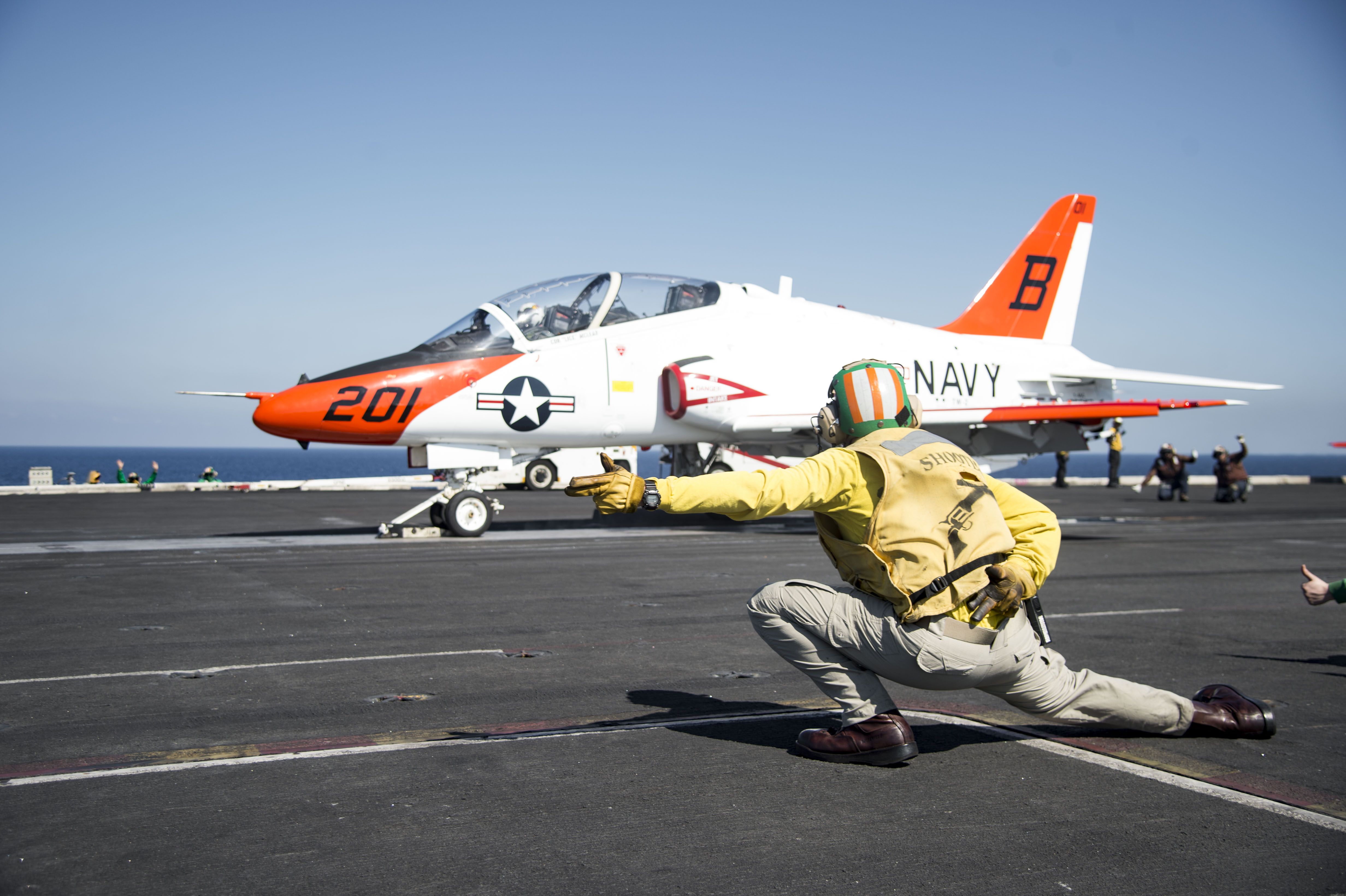
U.S. Pacific Fleet commander Adm. Scott Swift will lead a 30-day review on “the facts, circumstances and processes surrounding the recent physiological episodes involving T-45 and F/A-18 aircrew,” the Navy announced today.
Vice Chief of Naval Operations Adm. Bill Moran directed Swift in an April 21 memo to look into the physiological episodes themselves and how the Navy has attempted to address them – an effort that dates back to a 2010 integrated project team that stood up at Naval Air Systems Command to carefully document and attempt to prevent PEs in the F-18 fleet.
Swift will appoint members to the review team from across the Naval Aviation and Navy Medicine Enterprise and the engineering, legal and public affairs communities, according to the memo. Moran reiterates in the memo the Navy’s “unconstrained resource approach” to determining the cause of these events and preventing them going forward.
Navy pilots have experienced an increase in two types of physiological episodes: hypoxia due to problems with the On Board Oxygen Generator System (OBOGS), in which pilots may receive either insufficient oxygen or contaminated oxygen, and decompression sickness due to a failure of the Environmental Control System that causes a drop in cabin pressure.
The Navy had previously taken actions to address physiological episodes on the F/A-18A-D Hornets, F/A-18E-F Super Hornets and EA-18G Growlers. On March 31, though, the Navy canceled 94 T-45C Goshawk trainer jet flights due to concerns about the potential for PEs, and on April 5 Commander of Naval Air Forces Vice Adm. Mike Shoemaker announced an operational pause for the T-45s. That three-day pause turned into a 12-day pause, and when flights resumed last week the Navy had identified a temporary fix that would allow students to fly about 75 percent of the mission sets in their syllabus – but they cannot fly above 10,000 feet cabin pressure and cannot land on aircraft carriers until a permanent solution is identified.
Swift is to report back to Moran in 30 days, with his assessment of the situation and any recommendations meant to inform future operational, personnel and fiscal decisions, according to the memo.





